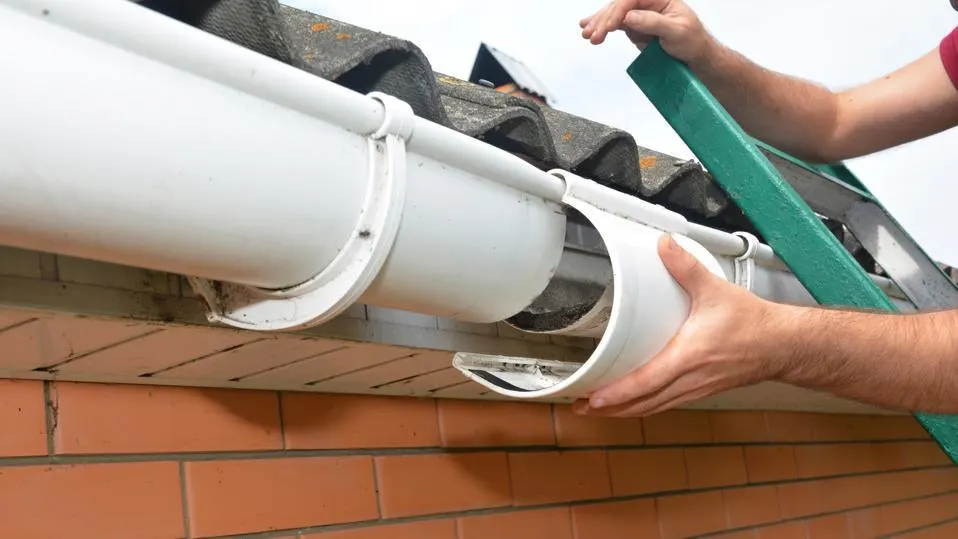Gutters are essentially the hero of most types of roofing systems, and many wear down over time and require gutter replacement. They guide water away from the structure and control where it flows out. Overall, these installations help prevent mildew, mold and other water damage that can be caused by water streaming and dripping off of the roof. This helps stave off damage to the property’s outer walls, foundation and keeps rain from drenching people entering and exiting, so, gutters are a necessity.
Gutters Offer a Work and Worry-Free Solution
Advances in gutter design have made these must-have installations even more effective and easier to maintain than ever before. It’s simple and quick for professionals to install gutters that stave off numerous issues such as foundation damage and soil erosion due to sagging, clogged, leaking or overflowing gutters. The best systems have leaf guard covers to keep debris out, wide-mouth outlets, extra-large downspouts and strong, heavy-duty construction materials.
The Process of Gutter Replacement
Some ask “do gutter guards work?” Yes! They are the most effective means of protecting the surrounding ground beneath the roofing eaves and shielding people from downpour. There are a few basic steps to the installation process that professionals perform, starting with sketching out the structure’s layout, and taking the following into consideration before getting started.
- Location of Downspouts: Downspouts need to properly facilitate drainage and allow water to easily flow away from the structure’s foundation. Additionally, they should be strategically placed to be less conspicuous.
- Size of Downspouts: Rather than the industry standard 2 to 3 inch downspouts, choose gutters that are at least 3 to 4 inches wide for better drainage abilities.
- Slope of Gutters: Careful measurements are taken to determine the slop of the gutters, which prevents water from accumulating inside them. Any adjustments necessary are made during installation.
- Determining If There’s a Need for Roof Hanger Mounting Straps: Properties without fascia boards that aren’t vertical will require roof hanger mountain straps to install the gutters.
Preparing Gutters for Installation
After getting an understanding of the property’s gutter needs, the system is prepared onsite to ensure the measurements are accurate. There are sectional gutters and seamless gutters. The best option is seamless, and K-style design is popular because they seamlessly blend into the roofline. K-style gutters feature a curved edge and a flat bottom that is similar to crown molding. Some installers may use sectional gutters, but where the seams join between sections are more susceptible to damage and leaks. This style can hold more water than traditional rounded gutters and is less likely to bend under forceful impacts.
Installing Downspout Outlets
Once the gutters are prepared, the downspouts and outlets are added to the assembly. This takes place on the ground instead of a ladder for safety and greater precision. Using the measurements taken in the first steps, holes are cut in the gutters to attach the outlets, and the downspouts are installed last.
Hanging the Gutters
The gutters are attached to the fascia boards or gutter mounting straps. Both are made using resilient materials that can withstand all types of weather. Furthermore, they can handle the weight of water the gutters take without causing any damage to the exterior.
Installing the Downspouts
The last step involves installing the downspouts to the outlets that have been attached to the gutters. They are then secured to the exterior using brackets to hold them firmly in place. Remember, professional gutter installations are best, and the work and materials are warrantied. Self installation may not include coverage on materials.






